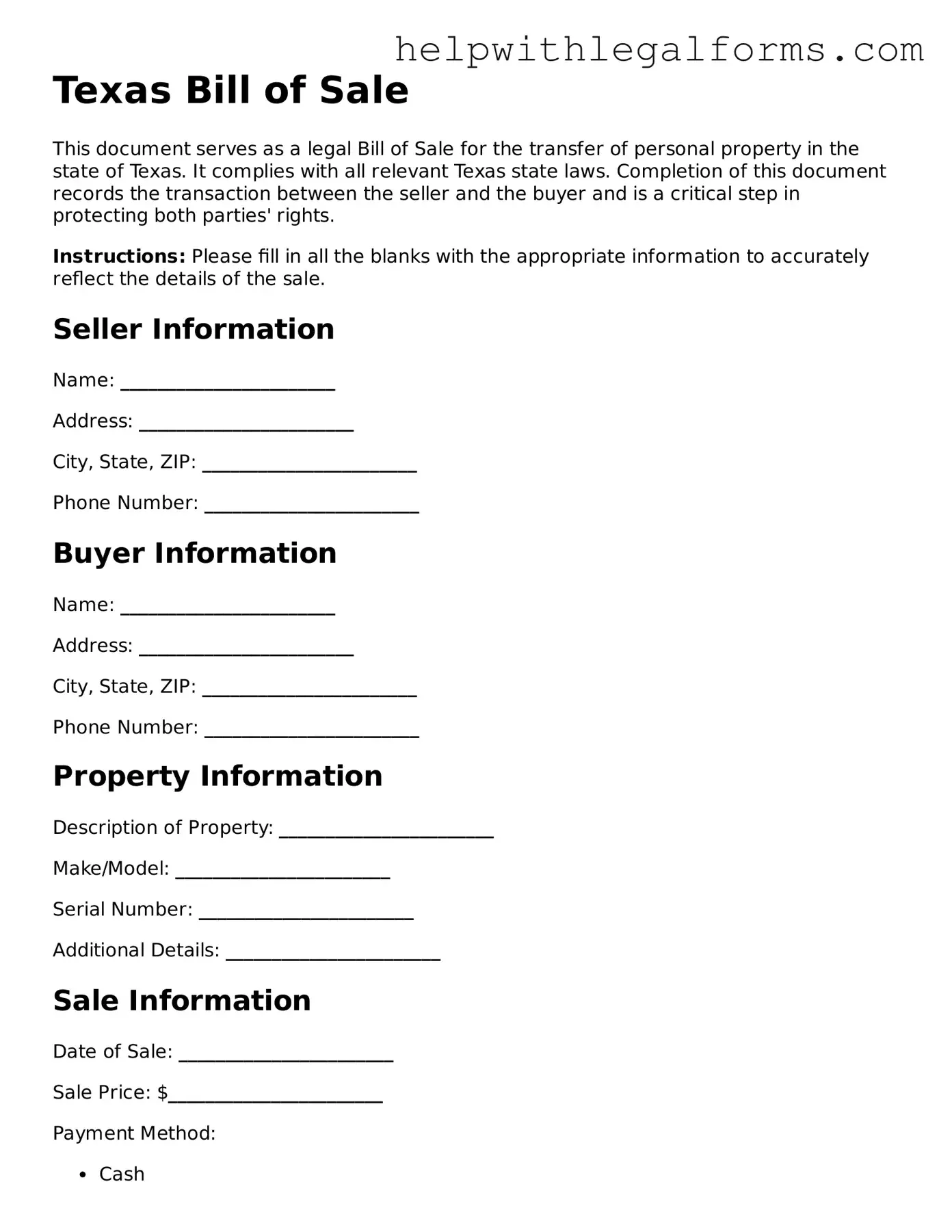Texas Bill of Sale
This document serves as a legal Bill of Sale for the transfer of personal property in the state of Texas. It complies with all relevant Texas state laws. Completion of this document records the transaction between the seller and the buyer and is a critical step in protecting both parties' rights.
Instructions: Please fill in all the blanks with the appropriate information to accurately reflect the details of the sale.
Seller Information
Name: _______________________
Address: _______________________
City, State, ZIP: _______________________
Phone Number: _______________________
Buyer Information
Name: _______________________
Address: _______________________
City, State, ZIP: _______________________
Phone Number: _______________________
Property Information
Description of Property: _______________________
Make/Model: _______________________
Serial Number: _______________________
Additional Details: _______________________
Sale Information
Date of Sale: _______________________
Sale Price: $_______________________
Payment Method:
- Cash
- Check
- Other: _______________________
Additional Terms and Conditions
____________________________________________________________
____________________________________________________________
Signatures
This document is valid only if signed by both the buyer and the seller. It acts as a receipt and acknowledgment of the sale.
Seller's Signature: _______________________ Date: _______________________
Buyer's Signature: _______________________ Date: _______________________
Note: Both parties are encouraged to keep a copy of this document for their records.
